Abstract
Scytalidium thermophilum isolates in culture, as well as the endogenous strain(s) in mushroom compost, were inactivated at 70°C. This temperature was used to pasteurize composts for experiments. Of nine thermophilic fungal species, only S. thermophilum and Myriococcum thermophilum grew well on pasteurized compost in test tubes. The effect of both species on the crop yield of Agaricus bisporus mushrooms was studied. In solid-state fermentation rooms called tunnels, compost was pasteurized and inoculated. After incubation, the inoculated organisms were reisolated and counted, showing their successful colonization. The yield of mushrooms on inoculated composts was almost twice that on the pasteurized control. This result demonstrates the effectiveness of S. thermophilum in compost preparation. Inoculation is not necessary for traditional compost preparation. Naturally occurring strains of S. thermophilum, present in ingredients, readily colonize compost during preparation. Inoculation may be vital if compost is pretreated at a high temperature in tunnels. This finding is of relevance for the environmentally controlled production of high-yielding compost.
Full text
PDF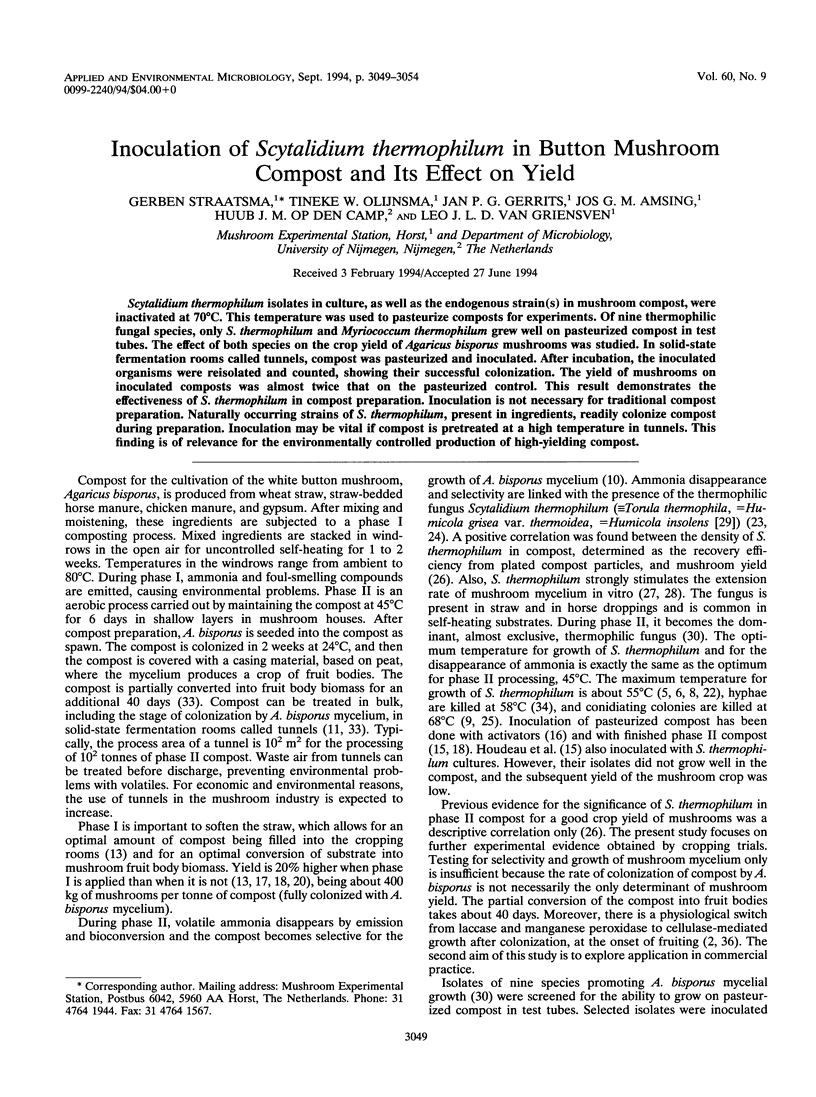
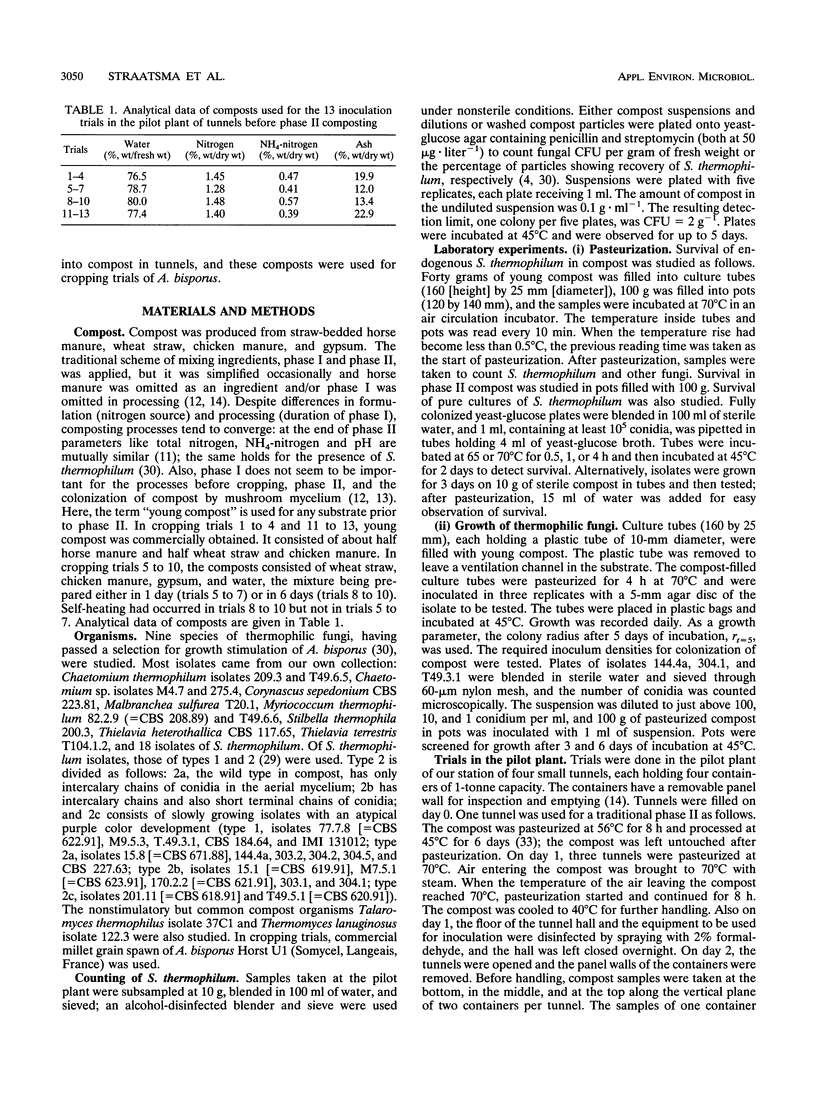
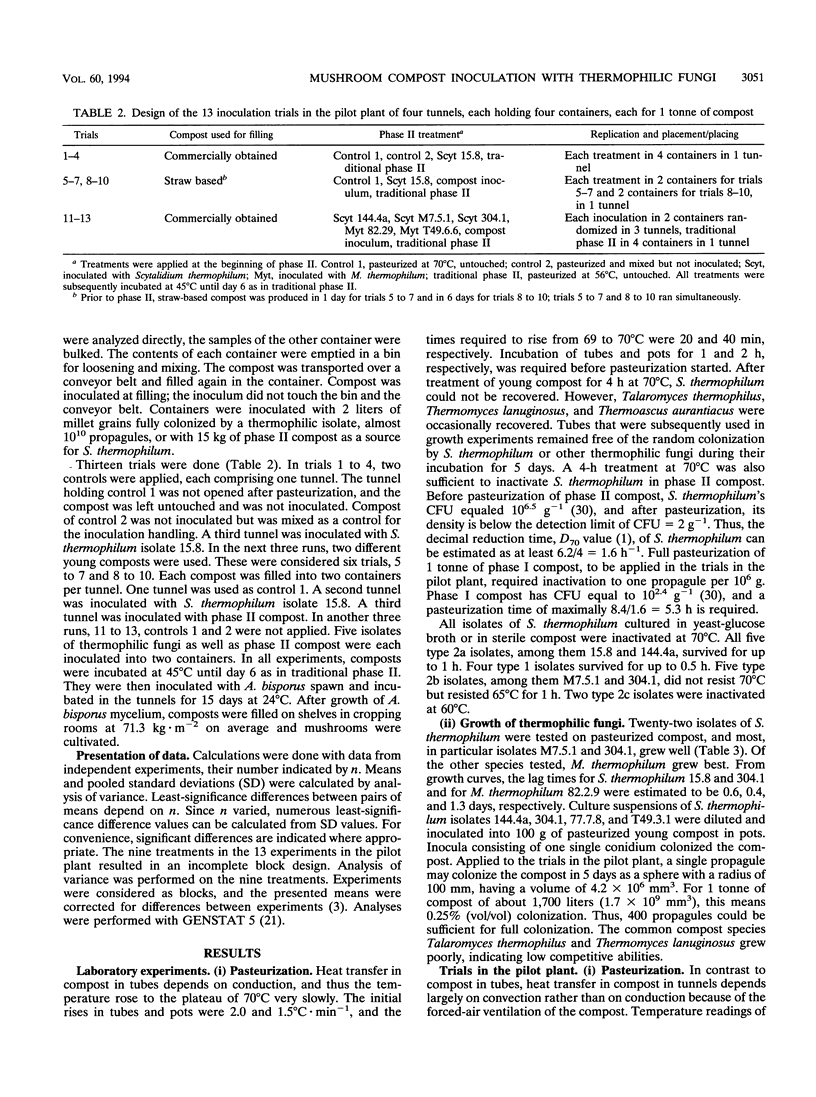
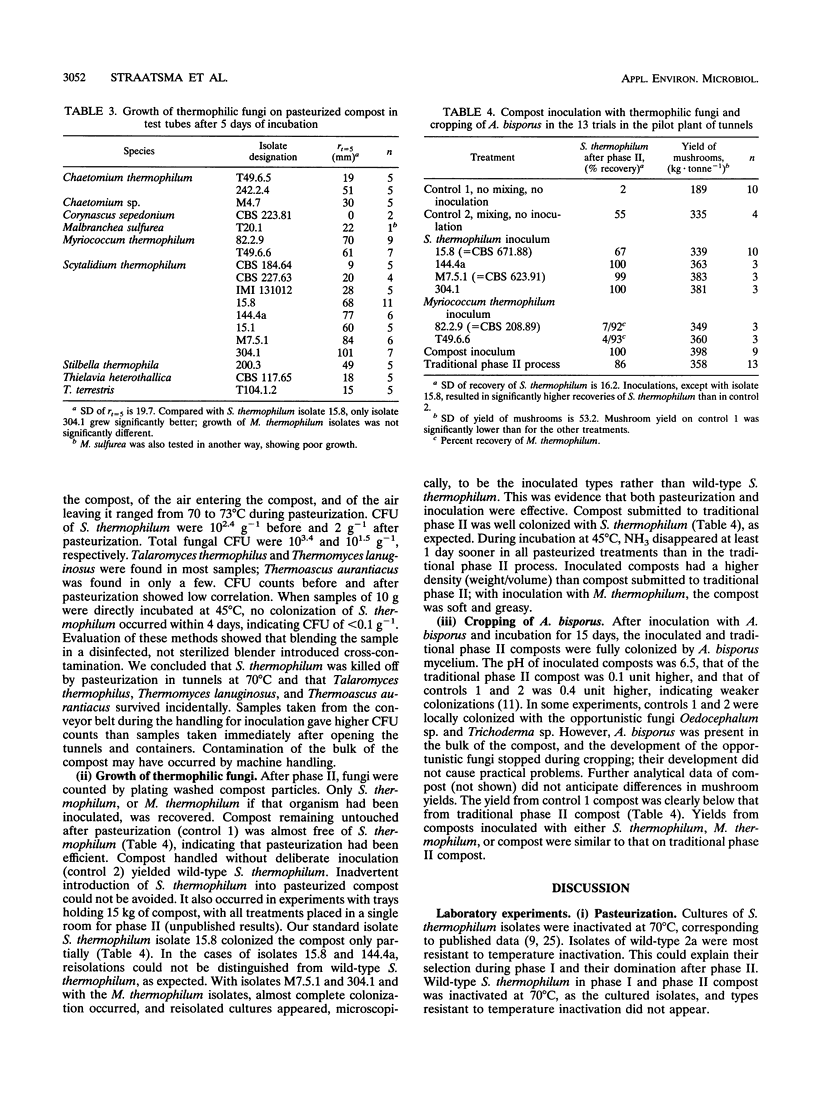
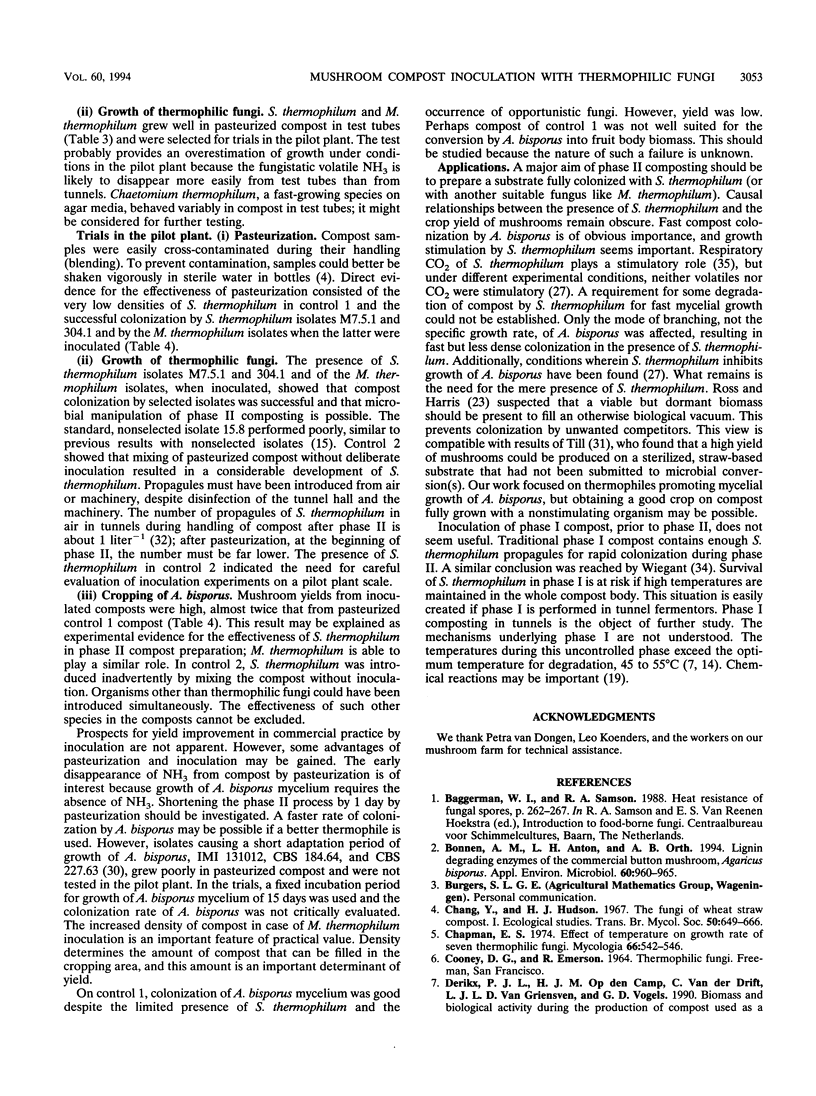
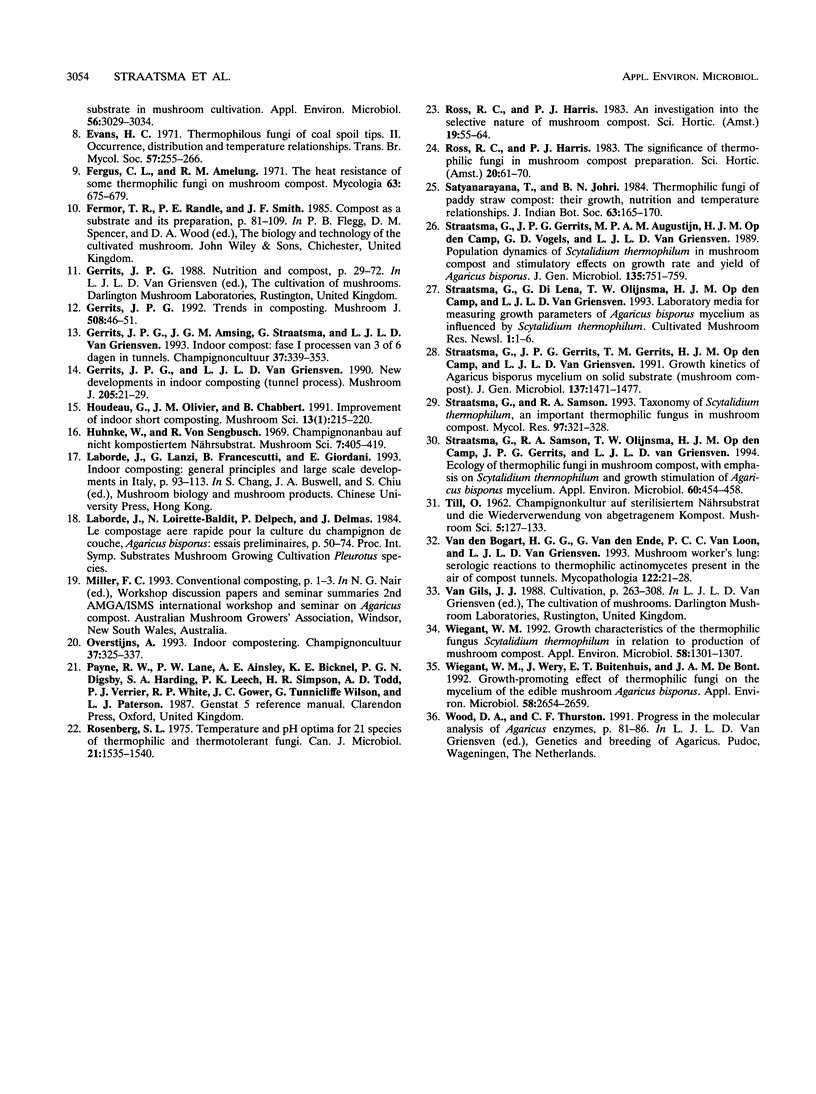
Selected References
These references are in PubMed. This may not be the complete list of references from this article.
- Bonnen A. M., Anton L. H., Orth A. B. Lignin-Degrading Enzymes of the Commercial Button Mushroom, Agaricus bisporus. Appl Environ Microbiol. 1994 Mar;60(3):960–965. doi: 10.1128/aem.60.3.960-965.1994. [DOI] [PMC free article] [PubMed] [Google Scholar]
- Chapman E. S. Effect of temperature on growth rate of seven thermophilic fungi. Mycologia. 1974 May-Jun;66(3):542–546. [PubMed] [Google Scholar]
- Rosenberg S. L. Temperature and pH optima for 21 species of thermophilic and thermotolerant fungi. Can J Microbiol. 1975 Oct;21(10):1535–1540. doi: 10.1139/m75-225. [DOI] [PubMed] [Google Scholar]
- Straatsma G., Samson R. A., Olijnsma T. W., Op Den Camp H. J., Gerrits J. P., Van Griensven L. J. Ecology of Thermophilic Fungi in Mushroom Compost, with Emphasis on Scytalidium thermophilum and Growth Stimulation of Agaricus bisporus Mycelium. Appl Environ Microbiol. 1994 Feb;60(2):454–458. doi: 10.1128/aem.60.2.454-458.1994. [DOI] [PMC free article] [PubMed] [Google Scholar]
- Van den Bogart H. G., Van den Ende G., Van Loon P. C., Van Griensven L. J. Mushroom worker's lung: serologic reactions to thermophilic actinomycetes present in the air of compost tunnels. Mycopathologia. 1993 Apr;122(1):21–28. doi: 10.1007/BF01103705. [DOI] [PubMed] [Google Scholar]
- Wiegant W. M. Growth Characteristics of the Thermophilic Fungus Scytalidium thermophilum in Relation to Production of Mushroom Compost. Appl Environ Microbiol. 1992 Apr;58(4):1301–1307. doi: 10.1128/aem.58.4.1301-1307.1992. [DOI] [PMC free article] [PubMed] [Google Scholar]
- Wiegant W. M., Wery J., Buitenhuis E. T., de Bont J. A. Growth-promoting effect of thermophilic fungi on the mycelium of the edible mushroom Agaricus bisporus. Appl Environ Microbiol. 1992 Aug;58(8):2654–2659. doi: 10.1128/aem.58.8.2654-2659.1992. [DOI] [PMC free article] [PubMed] [Google Scholar]


